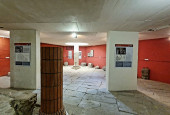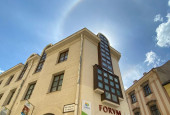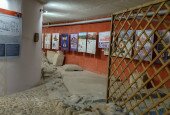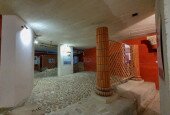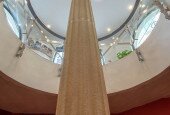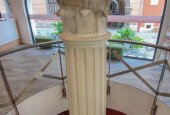Forum Scarbantiae / The Forum of Scarbantia
Four and a half meters below the centre of Sopron lay the ruins of the Roman town Scarbantia. On the basement level of the Iron House on the corner of Új Street-Szent György Street, under the Tourinform office, visitors can see the southern part of the Scarbantia forum in the FORUM SCARBANTIAE exhibition opened in 1994.
Excavations by the National Monument Inspectorate and the Sopron Museum found that the stone-paved square of the Scarbantia Forum, like the Aquileia and Tergeste (Trieste) forums, is one-step deeper than their surrounding street level.
Based on the forum representation found in Pompeii we can assume that traders were selling their articles during the day at the Scarbantia forum, and from the evening hours and on festive occasions, local citizens were conversing here. Here they could get information from merchants arriving from distant lands or from officials managing the affairs of the Province or the Empire who arrived on the high-traffic long-distance road from Carnuntum (Deutsch-Altenburg, Petronell), Vindobona (Vienna), or Savaria (Szombathely). In Scarbantia, especially around the Forum, travellers could find all the services that were common in major Roman cities. Sanctuaries, baths, comfortable accommodation, shops, workshops and last but not least, wine bars were open for the guests. The game table on display on the Forum could have stood in such an inn.
The forum was used until 568, when the Longobards intruded to Italy, and Scarbantia became depopulated. It was here that a brick scratch made with a Langobard clothespin needle, which was one of the floor bricks of a 6th century Christian community prayer house, was found. The name of Vigilius Episcopus Saravaciensis, or Bishop Vigilius of Scarbantia, is known from the list of Bishops of the Synod of Aquileia from the early 570s. After that the buildings of the forum, and the huts of the later migration period were nearly all crushed flat, they were standing in ruins until the arrival of the Hungarians in the 10th century.


